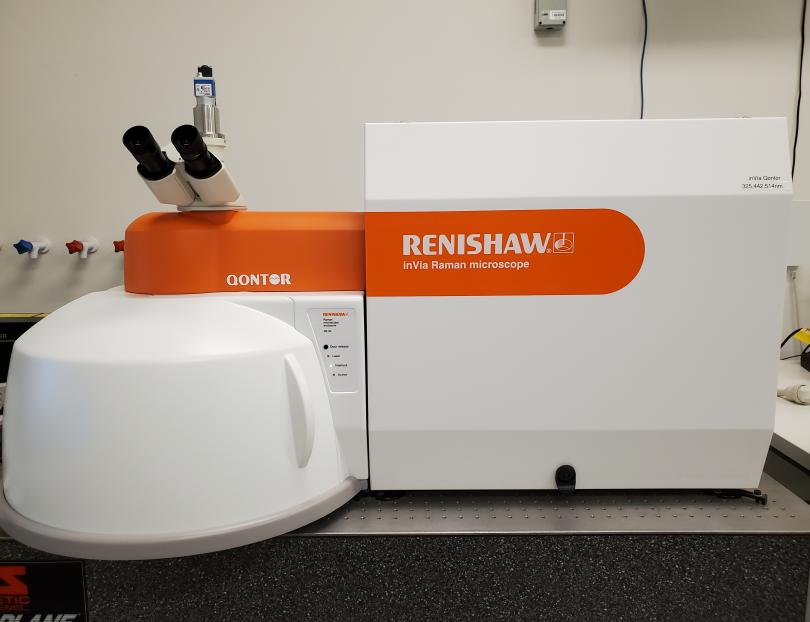
The inVia Qontor is a powerful analytical tool that combines a Raman spectrometer with a microscope. It allows researchers to analyse the chemical composition of a sample by focusing a laser beam on a specific area and analysing the light scattered back.
Multiple Laser Configurations:
Offers various laser wavelengths (325 nm, 442 nm, 514 nm and 633 nm) with different gratings (1200 l/mm and 2400 l/mm) for optimal analysis depending on the sample.
Default settings:
Raman using 514 nm (green) diode laser with 2400 l/mm grating
User configurable settings:
Raman using 514 nm with 1200 l/mm grating
Raman using 442 nm with 2400 l/mm grating
Raman using 633 nm with 1200 l/mm grating
Photoluminescence at 325 nm with 1200 l/mm grating
Configurations requiring lasers other than the default:
Raman using 325 nm with 2400 l/mm grating
Raman using 514 nm with 1800 l/mm grating
Raman using 633 nm with 1800 l/mm grating
Important note: Must be reserved 48 hours prior to booking by contacting the lab via email
Capabilities of the inVia Qontor Raman Microscope:
- High Resolution: Standard operation provides a laser spot size of 1.5 microns at 50x magnification. Confocal mode can achieve an even smaller spot size of 0.5 microns.
- LiveTrack TM Technology: Analyses samples with uneven or rough surfaces by maintaining focus in real-time.
- Fast Imaging Techniques using StreamLine TM which utilises a laser line for rapid image generation.
- Fast Imaging Techniques StreamHR TM which employs a laser spot for high-resolution imaging with pixel sizes as small as 50 nm.
Diverse Applications:
- Ideal for identifying and studying the structure of minerals, geological samples, semiconductors, and other inorganic materials.
- Characterisation of organic, polymer, and inorganic samples with the aid of a library database.
- Low-power measurement of biological samples (around 0.1 mW).
- If fluorescence is a problem using the 514nm source, then measurements can be made using 633 nm.






